
|
Schneider Research Group |
|
Engineering Cell Dynamics |
|
Adhesion and Cytoskeleton Dynamics |
|
Cancer Cell-Immune Cell Paracrine Interactions |
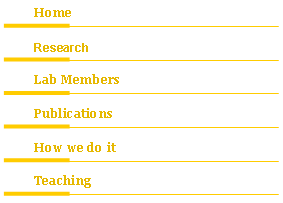
|
Coincidence Detectors for Cancer Diagnostics |
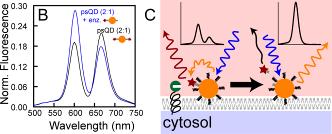
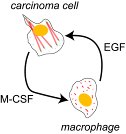
|
Engineering Multi-cue Migrational Environments |
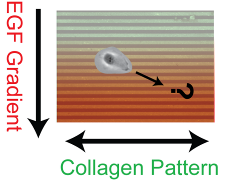
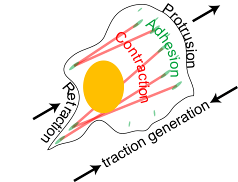
|
Adhesion and Cytoskeleton Dynamics: |
|
Cell migration occurs in steps of protrusion, adhesion, contraction, traction generation and retraction. First the cell protrudes via force generated by polymerization of the actin cytoskeleton. The protrusion adheres to the surroundings through specific interactions between integrins and the ECM. This interaction generates macromolecular protein complexes called focal adhesions (FAs). Once adhered, the cell generates contractile forces through the actin cytoskeleton. These contractile forces allow the cell to detach at its trailing edge and move forward. It has long been known that collagen and EGF alter cell migration speed, persistence and directionality when either presented uniformly, in gradients or on aligned fibers. Recently, has there been an interest in pursuing quantitative, high resolution techniques to measure morphology and focal adhesion dynamics . While these papers have at times examined the effect of ECM or growth factors on changes in morphology or FA dynamics, none have attempted to examine their regulation during contact guidance, chemotaxis or when both cues are present. |